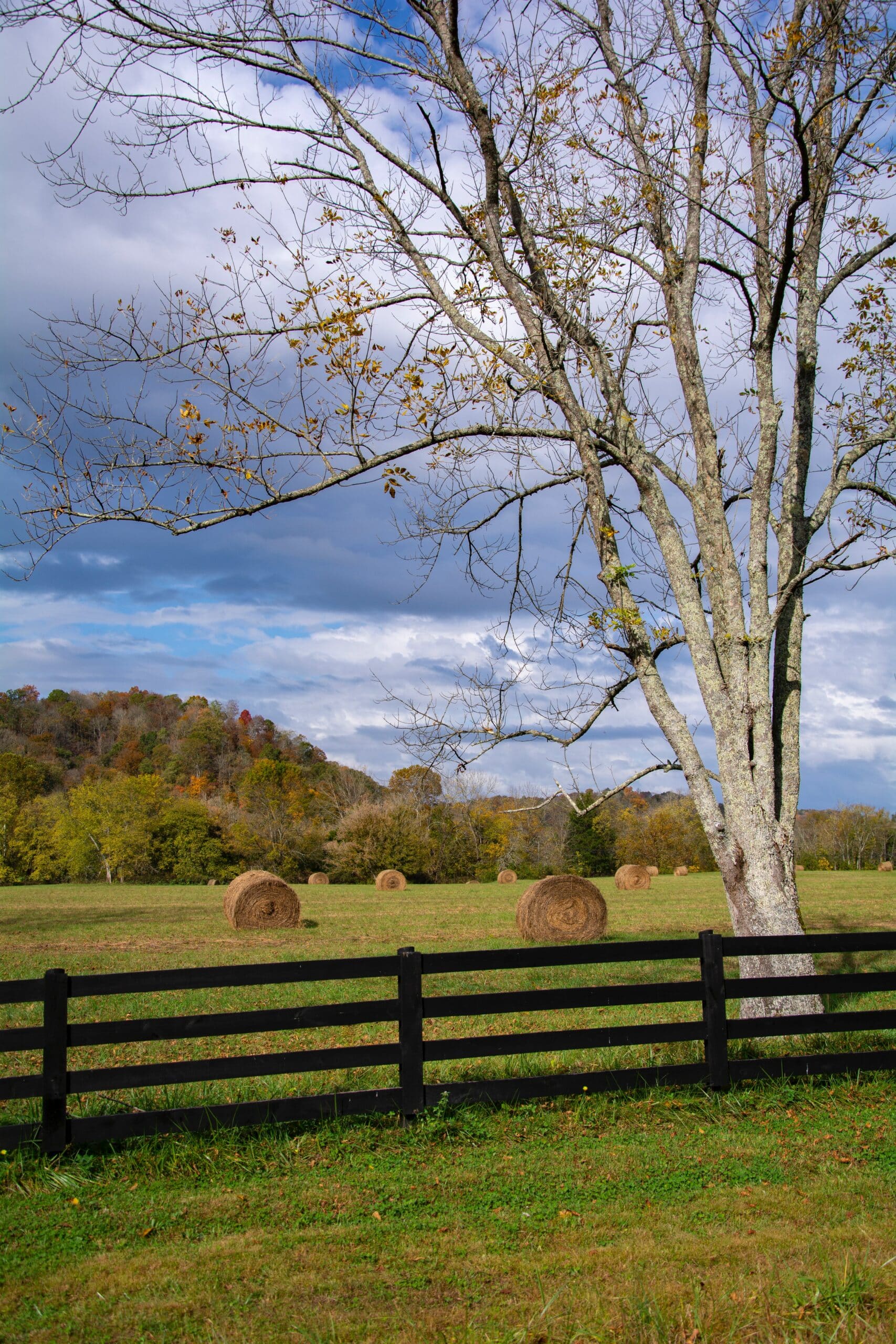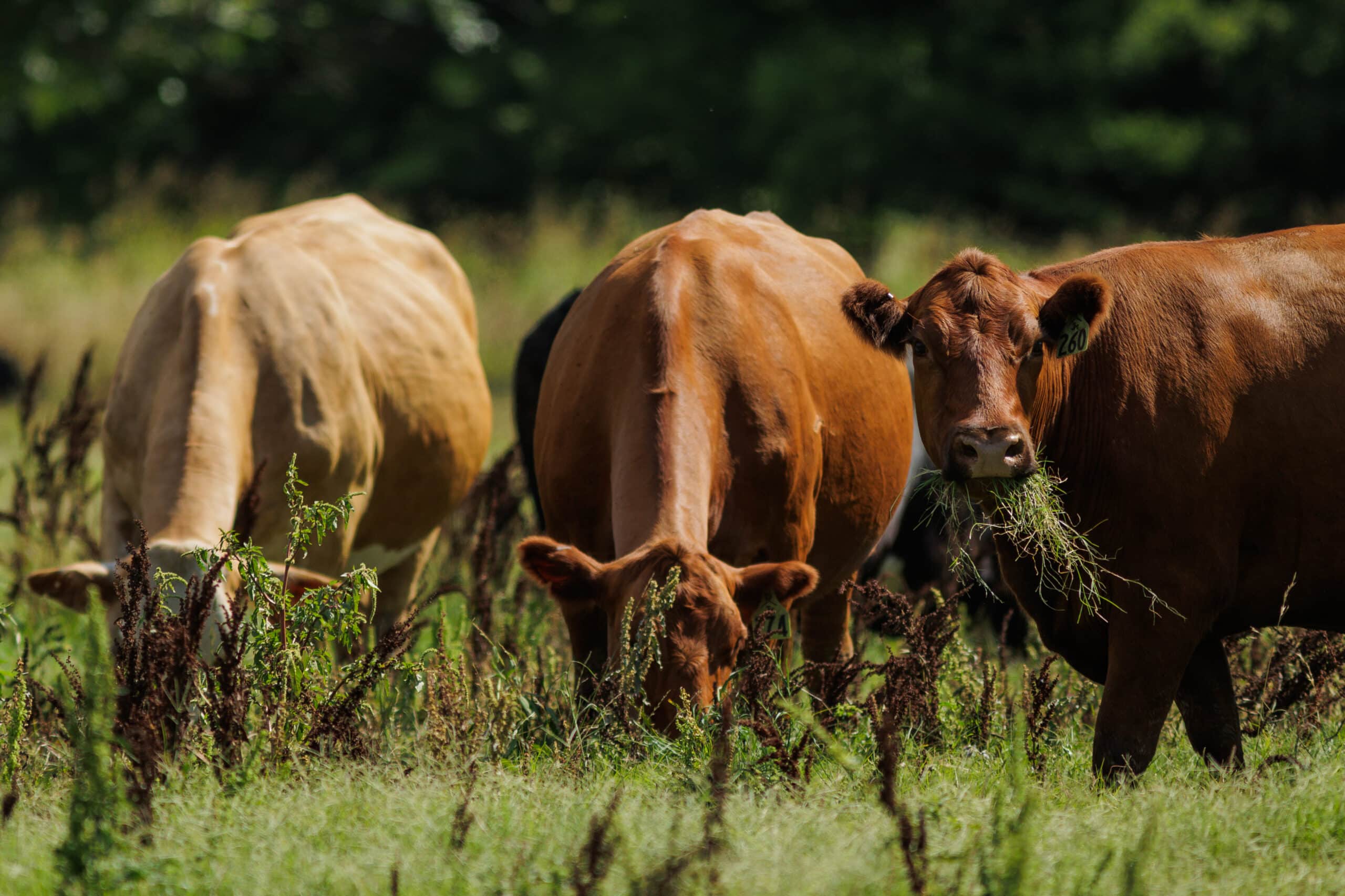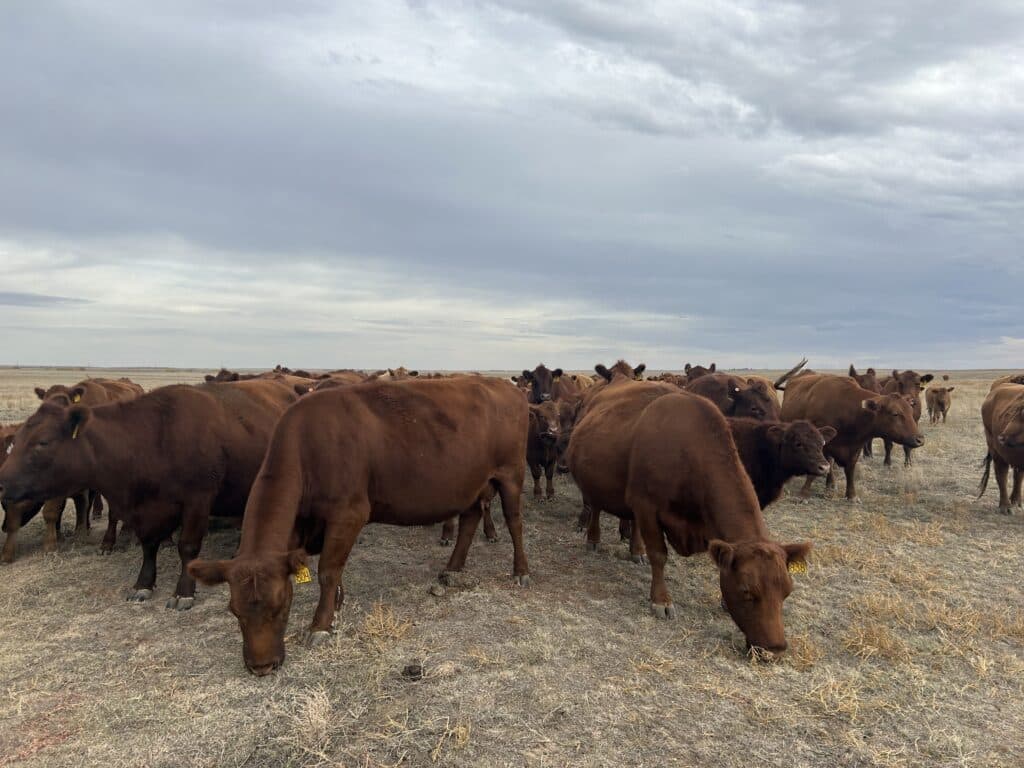Unwrapping bale grazing

What is bale grazing?
Bale grazing is the process by which cattle are overwintered outdoors and fed bales of hay. Typically, the round bales are set out in the fields before winter feeding. They are arranged in such a way that access is controlled using electric wire. Livestock are penned in smaller sections of the field and moved regularly.
There are huge benefits to this form of winter feeding which is common in Canada and North America. Trial farms throughout the UK are currently proving the effectiveness of this technique of outwintering.
What are the environmental benefits?
This method of farming is a more holistic approach benefitting many aspects of farming. Outwintering livestock can improve your fields. Manure directly from the animals rejuvenates pasture. If livestock and bales are spaced out effectively, then manure, urine and leftover feed is trampled into the ground evenly. This enhances forage growth the following season. Sward diversity improves and becomes more productive.
Not only is pasture enhanced but so is the soil. Soil organic matter and soil nitrogen capture significantly increases using bale grazing. Farmer Silas Hedley-Lawrence who has been using bale grazing for 4 years, has seen a reduction in water infiltration rates from more than 2 hours down to 30 seconds. Much of his land is on clay-based floodplains, so this has been a huge improvement for him.
He has also seen a flourish in wildlife across his farm. The manure on the fields has increased dung beetles and other insects, in turn attracting small mammals and birds. This is evident by an increase in barn owl sightings. He also sees more hares and cattle egrets on his land. Bale grazing improves the biodiversity on farms, enhancing the local wildlife.
What are the animal welfare benefits?
Indoor housing always comes with its risks. Due to the humid environment, diseases like pneumonia are common. Damp bedding from leaking water troughs and urine can increase the incidences of mastitis. Lameness is more common in housed cattle than outdoor reared animals and, if conditions are poor with limited space, then aggression can become a problem.
Through rearing livestock outdoors, animals exhibit more natural behaviour. They have the space to roam and, in the case of cattle, can lie down more comfortably than in stalls. Some farmers have noticed that their cattle are cleaner on this system as they always have somewhere fresh to lie down. A happy animal is a more productive animal.
There may also be benefits to animal nutrition the following spring and summer. Pasture is positively influenced by bale grazing, with more nutritious and diverse swards.
What are the cost benefits?
With bale grazing it is easy to see where money can be saved. Famers using this method typically place all the bales out in the field before winter feeding. This means that the feed is already in place and does not require daily feeding. You can reduce four hours of daily labour to just one, and you can cut your winter tractor usage by 90%. So, this technique will save on labour costs, fossil fuels, and machinery use.
The daily chore of removing manure from indoor-overwintered cattle is expensive that uses fuel, staff, and time. Mucking out sheds in the spring is also costly. Having livestock on the fields during the winter also reduces the costs of and needs for fertiliser. Direct application of manure onto the fields from the animals themselves saves time and money.
Some UK farmers have been trialling bale grazing on their farms. They have joined The Innovative Farmers field lab to record the effects of bale grazing. Oxfordshire famer, Silas Hedley-Lawrence, saves £1.36 per cow and calf per day. For a 100-cow herd housed for approximately 180 days, he can save £24,480 each year using bale grazing.
Savings from feed are also possible. Ian Horsley farms in the Malvern Hills and has estimated a feed cost of £1.09 per animal per day when bale grazed compared to £2.82 when housed.
Stuart Mitchell who farms on the Scottish Borders, has saved a massive £36,720 per year using a mixture of bale grazing and indoor housing. He outwinters 100 cattle and houses 40 for 4 months. A few farmers are using mixed methods to determine if bale grazing is right for them.
What are the benefits to the farmer?
There are clear benefits to the farmer when using bale grazing. As mentioned above, workload can decrease, whilst income, biodiversity, and animal welfare are all improved. Through enhancing the environment, this method could help farmers apply for one of the government’s Environmental Land Management Schemes (ELMS) such as the Sustainable Farming Incentive, Local Nature Recovery or Landscape Recovery schemes.
How to Get Started with Bale Grazing
Some farmers begin bale grazing by trialling a small number of the herd on a few selected fields. It is best to use round bales that can be rolled out as and when needed and to place these on well-drained soils. Some recommend placing the bales on stockpiled pasture to reduce the issue of mud. The earlier you put your bales out, the longer the grass will grow in between the bales, cushioning the ground.
Arrange the bales in such a way that all cows can access them. Some farmers suggest using 1 bale for 10 cows and moving the cows to another spot every 3 days. It all depends on numbers of livestock and land area.
As an example, one farmer tested bale grazing by setting out 34 bales in a 5-hectare field in which 32 cattle fed for 34 days during the winter.
Another farmer ran 13 cows and calves, and seven yearlings in 80 25×25 metre cells for 94 days. He used 140 bales and found that only 2% of the field had been damaged and would require reseeding in the spring.
What are some of the challenges of bale grazing?
Whatever your layout or strategy when it comes to bale grazing, there are some things you need to be aware of. It does require strategic pre-planning to determine where your bales should be placed and how to move the livestock from pen to pen. However, once this has been done a first, successful time, it is easy to replicate in subsequent years.
You must consider the surrounds when implementing bale grazing. Due to the manure and urine produced in a relatively small area, you need to avoid proximity to water sources to avoid contamination. Typically, 100 metres away is enough.
Although some farmers roll out their bales for the animals to graze, most leave them intact which can often create more wastage than other forms of feeding. Leaving a significant amount may inhibit grass growth underneath it the following spring.
Lastly, for farmers that usually winter cattle indoors, switching to outwintering may mean feeding can take longer than providing food in sheds where stock are altogether. However, this can be offset throughout the year where cleaning sheds and bringing cattle indoors will be lessened by out-wintering.
AgriWebb can help you to keep track of your livestock movements. To find out more about AgriWebb, click here.
References
-
- UGA Forage Extension Team (2020) https://site.extension.uga.edu/forageteam/2020/09/bale-grazing-101/ Accessed 13th July 2023


